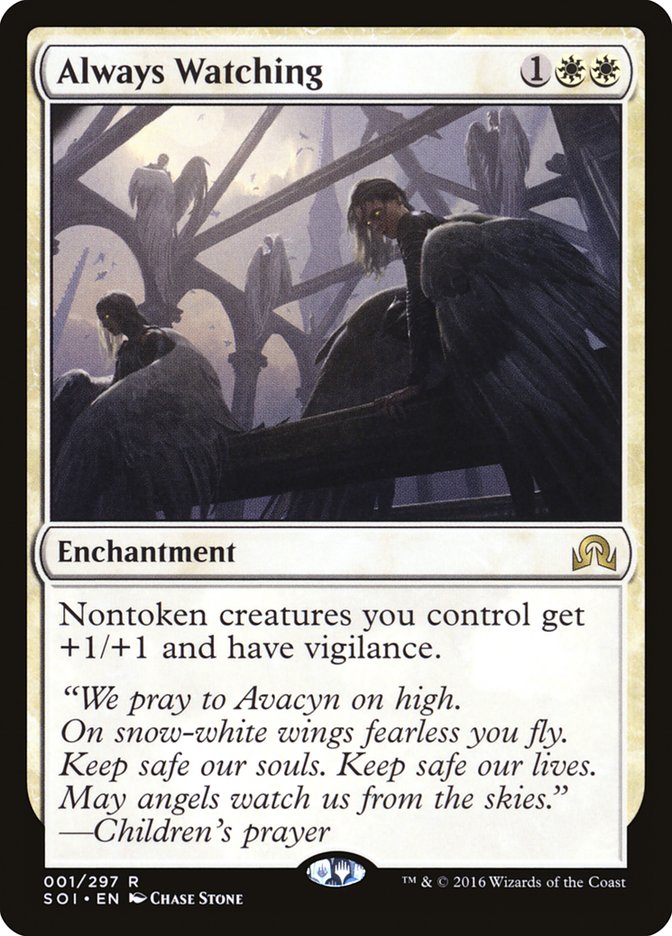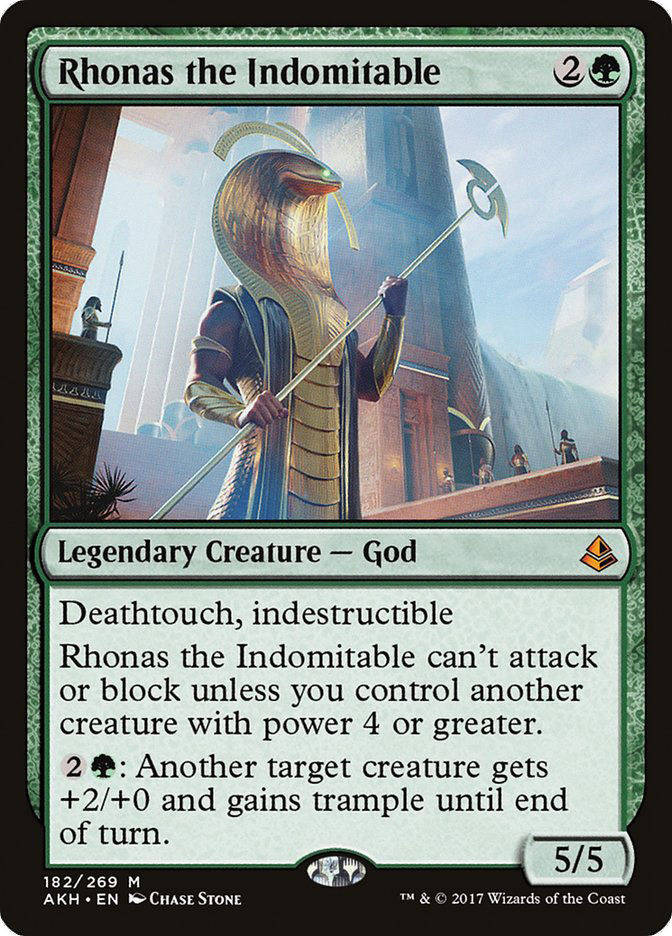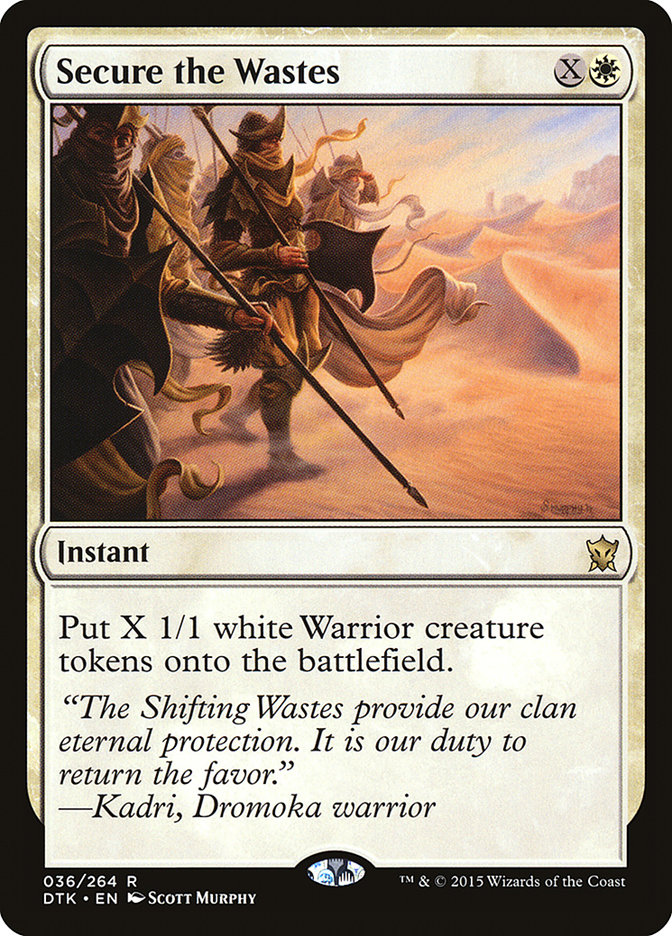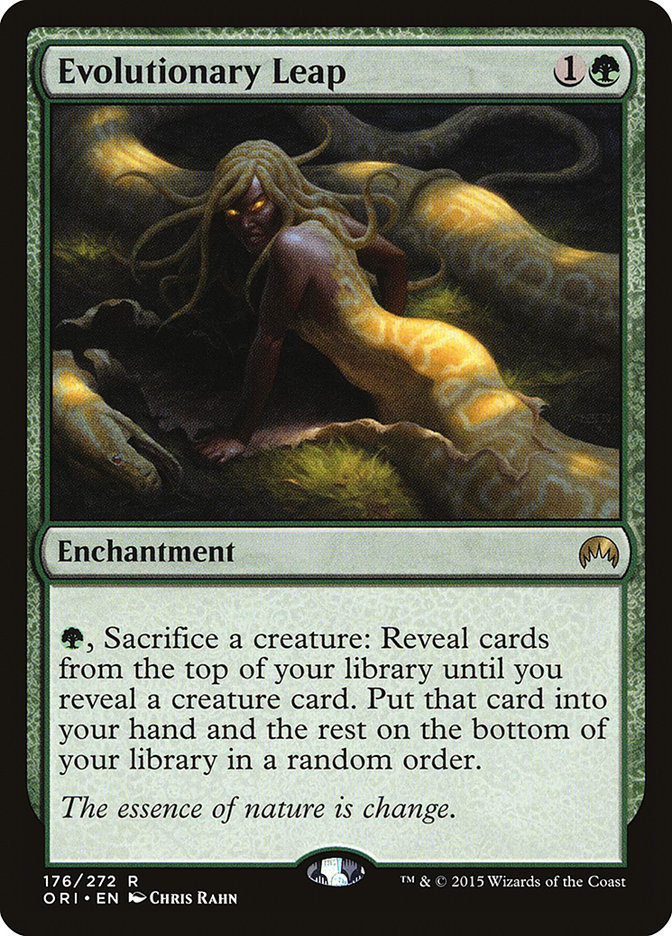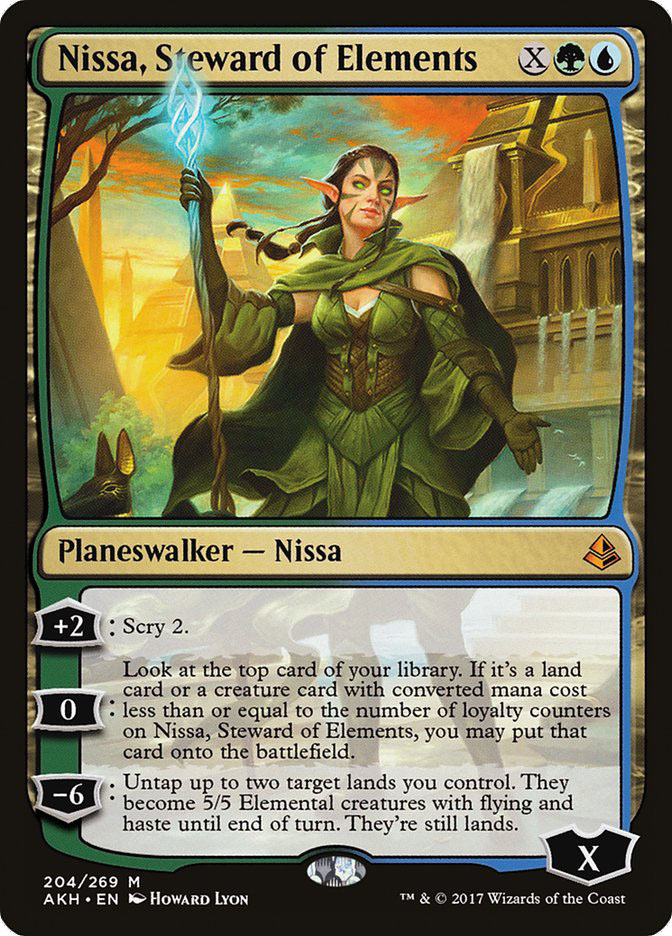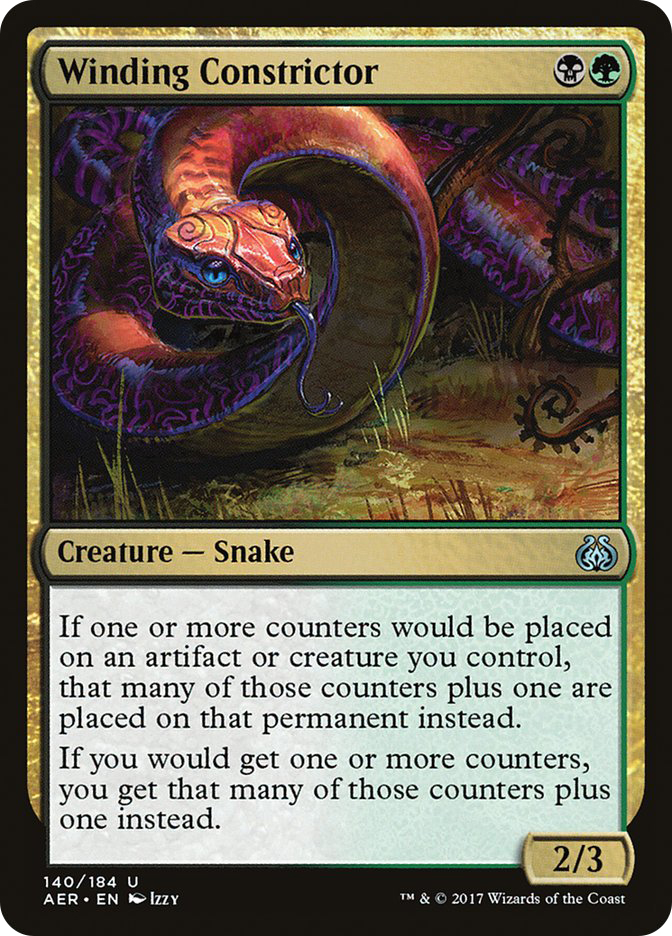Last Friday gave us the Amonkhet card image gallery. This weekend gives us the Amonkhet Prerelease. This Monday will have a Banned and Restricted announcement. There’s a lot going on.
With the new B&R update not being until Monday, it really throws a wrench into what can be brewed and tuned before #SCGATL next weekend. Does this cycling deck need to pack extra answers for Saheeli Rai / Felidar Guardian? Is there a reason to play a four mana not-Gideon, Ally of Zendikar planeswalker? Is something getting unbanned? It really hurts those of us trying to build something from scratch.
Luckily, we live in an age where that isn’t the only way to build a deck. With rotation only occurring once a year, Amonkhet and Hour of Devastation will likely serve more as a way to augment existing archetypes as opposed to creating new ones, at least at first. When rotation occurs, the number of sets in a Standard format is lower, making the newest set have a higher impact on Standard.
Amonkhet, on the other hand, doesn’t have Hour of Devastation to augment all of the keyword-matters synergy cards yet (looking at you, Drake Haven) and has to compete with three completed blocks. This doesn’t mean that the cards from Amonkhet aren’t worth playing; it just means that, until Hour of Devastation is released, we’re likely going to be using the generic good cards from the set to make existing archetypes even better rather than building entire Embalm decks from scratch.
Cards to Look Out For
When perusing the set for cards to add to decks, look for things that synergize with existing archetypes. Last week, I wrote a piece on Living End that looked to As Foretold’s ability to synergize with manaless spells and Drake Haven with cards that cycled. It’s relatively academic to apply this same theory to Standard.
Exert, at its core, is meant to punish players for taking advantage of the value offered by its ability. The key to the wording in Exert is that it doesn’t actually tap the creature that is Exerting itself; the ability just assumes that the creature is tapped as a result of its own attack. This means that the best way to abuse this mechanic is to find effects that either untap creatures or prevent them from tapping to attack. The Internet has already figured out the easiest way to avoid paying the costs of Exerting a creature:
Always Watching has slipped itself in and out of white decks since it was initially printed, and despite sitting on the backburner for the last few months, the card has made waves in Standard:
Creatures (29)
- 4 Knight of the White Orchid
- 2 Dragonlord Ojutai
- 2 Kytheon, Hero of Akros
- 4 Archangel of Tithes
- 3 Consul's Lieutenant
- 4 Reflector Mage
- 2 Archangel Avacyn
- 4 Thraben Inspector
- 4 Thalia's Lieutenant
Lands (24)
Spells (7)

Creatures (31)
- 4 Knight of the White Orchid
- 4 Dragon Hunter
- 3 Kytheon, Hero of Akros
- 3 Anointer of Champions
- 3 Expedition Envoy
- 4 Thraben Inspector
- 4 Thalia's Lieutenant
- 2 Hanweir Militia Captain
- 4 Town Gossipmonger
Lands (18)
Spells (11)

Creatures (19)
Planeswalkers (4)
Lands (25)
Spells (12)

Creatures (21)
- 4 Thraben Inspector
- 4 Thalia's Lieutenant
- 1 Hanweir Militia Captain
- 4 Hanweir Garrison
- 2 Thalia, Heretic Cathar
- 2 Pia Nalaar
- 4 Inventor's Apprentice
Planeswalkers (4)
Lands (23)
Spells (12)

All of these decks are places that one could presumably find space for the new Exert creatures without much issue or update in the case of cards being unbanned. The first thought with a card like Always Watching is to update the low-to-the-ground aggro decks from the last year or so:
Creatures (29)
- 4 Expedition Envoy
- 4 Thraben Inspector
- 4 Thalia's Lieutenant
- 4 Hanweir Militia Captain
- 4 Town Gossipmonger
- 4 Stern Constable
- 4 Glory-Bound Initiate
- 1 Gust Walker
Planeswalkers (3)
Lands (19)
- 19 Plains
Spells (9)

This deck is about as basic as it comes: a line of four-ofs with some seasoning to taste. The low land count means the deck is spell-dense (making up for the overall lowered card quality that these decks tend to suffer from) and there are a number of ways to make it difficult to block the important creatures. Gust Walker may be a little bit too cute, but it felt worth trying in the deck. The biggest hurdle for this strategy to overcome is Walking Ballista, but it doesn’t matter how powerful their cards are if they’re dead.
The other direction to look towards taking this archetype is reminiscent of an archetype championed by our own Mark Nestico a few years ago.
Creatures (17)
- 4 Stormbreath Dragon
- 4 Goblin Rabblemaster
- 2 Ashcloud Phoenix
- 4 Seeker of the Way
- 2 Monastery Mentor
- 1 Soulfire Grand Master
Lands (24)
Spells (19)

Despite not being an existing archetype in today’s metagame, this isn’t too far off of what Kris McCord was doing in his R/W aggro deck above. It’s an aggressively slanted midrange deck that plans to do one of two things: overpower the smaller decks or have threats powerful enough to beat up the big decks before they can take over.
Creatures (22)
- 4 Thraben Inspector
- 2 Thalia, Heretic Cathar
- 4 Selfless Spirit
- 4 Glorybringer
- 4 Glory-Bound Initiate
- 4 Battlefield Scavenger
Planeswalkers (4)
Lands (24)
Spells (10)

Most of the cards in this deck are relatively straightforward and have one goal in mind: get ’em dead. This strays a bit closer to the “brew” side of things, but shifting the focus to a more Humans-oriented theme a la McCord would be relatively easy using a similar stencil: shave Glorybringers for Hanweir Garrisons, shave a land, turn Battlefield Scavenger into Thalia’s Lieutenant, and so on.
This card is great.
I know, I know, I’m being paid by StarCityGames.com to peddle cards [Please.–Ed.], but seriously, this card is the bee’s knees. The Gods of Amonkhet having the ability to crew Vehicles is astounding, and, as embarrassing as it is, seeing Rhonas just makes me want to do the same thing that I do every single set: build a G/W Tokens deck.
Creatures (17)
- 4 Sylvan Advocate
- 2 Archangel Avacyn
- 3 Lambholt Pacifist
- 4 Walking Ballista
- 1 Angel of Sanctions
- 3 Rhonas the Indomitable
Planeswalkers (7)
Lands (24)
Spells (12)

Rhonas is easy to turn on in this strategy, and their ability makes the go-wide strategy much better than it normally would be, making it harder to block reasonable creatures and deal damage with the embarrassingly tiny attackers.
Part of the strength of G/W Tokens pre-rotation was the deck’s ability to use its mana every turn, and between Walking Ballista and Rhonas, it’s hard to imagine any bit of mana going to waste. Even just having a Rhonas the Indomitable and a Sylvan Advocate means that, for three mana, one could attack for nine as early as the fourth turn. That may not sound too impressive, but in a deck that is trying to clog the battlefield as much as possible, having any semblance of game before the cluttering the battlefield is an attractive perk of a new card in the deck.
If only there were a deck that just wanted generic card advantage… a certain archetype that had a pair of cards that could trump anything the opponent was doing… a multicolor combo deck that just deployed as many permanents that replaced themselves as possible… if only…
Creatures (16)
- 3 Whirler Virtuoso
- 4 Servant of the Conduit
- 4 Rogue Refiner
- 4 Felidar Guardian
- 1 Vizier of the Menagerie
Planeswalkers (9)
Lands (21)
Spells (14)

Oh, okay, I guess there is. That’s nice. It’s hard to say if Nissa or Vizier of the Menagerie is better in this deck, and there would likely need to be a few more deckbuilding concessions that would need to be made in order to properly compensate for Vizier’s inclusion, but they both do something incredibly in line with Four-Color Saheeli’s primary game plan.
Nissa even plays well with the Whirler Virtuoso-styled, back-door, “Well, I guess a bunch of fliers is an okay way to win as well” plan. If nothing changes with the Banned and Restricted update Monday, this is absolutely the first place that I’ll be starting for #SCGATL.
So this is where things get a little complicated. The premier green aggro deck of the last few months has featured this little critter:
There’s a slight issue with slotting Channeler in with the Snake: it’s a pretty embarassing nonbo to have Winding Constrictor add extra -1/-1 counters to your own creatures. Updating the Winding Constrictor decks will do one of two things:
- They will eschew most of the new -1/-1 counter synergies in order to continue playing the powerful synergies associated with Winding Constrictor.
- The deck will cut Winding Constrictor to play the slower deck with -1/-1 synergies and avoid splash damage from opposing decks playing -1/-1 counter-based removal.
Luckily, this is a decklist-driven article, so we have time to fit both kinds of decks into the article!
Creatures (26)
- 4 Catacomb Sifter
- 2 Verdurous Gearhulk
- 4 Servant of the Conduit
- 4 Winding Constrictor
- 3 Rishkar, Peema Renegade
- 4 Walking Ballista
- 2 Rhonas the Indomitable
- 3 Bone Picker
Planeswalkers (3)
Lands (23)
Spells (8)

This list is incredibly similar to a list that I recently swept a PPTQ with and the curve is great. I’m incredibly optimistic about Bone Picker in future Standard. It seeing a creature die on either side of the battlefield is a big game; Eldrazi Scions and Walking Ballistas tend to find their way to the graveyard pretty easily, and Fatal Push and Grasp of Darkness also tend to make a habit of escorting creatures off of the battlefield.
Nissa, Voice of Zendikar has a knack for putting most creatures in the deck over Rhonas the Indomitable’s threshold to be a “real” creature, and the synergies between the rest of the cards are almost old hat at this point.
Creatures (25)
- 3 Catacomb Sifter
- 4 Grim Flayer
- 3 Verdurous Gearhulk
- 4 Scrapheap Scrounger
- 4 Walking Ballista
- 4 Channeler Initiate
- 1 Exemplar of Strength
- 2 Rhonas the Indomitable
Planeswalkers (4)
Lands (23)
Spells (8)

This list leans a bit closer to Brennan DeCandio’s Delirium list from the first week of Aether Revolt Standard and the logic is a bit self-explanatory. This is a list that wants extra creatures to offset the cost associated with Channeler Initiate and Exemplar of Strength as the game goes on. Drawing a 0/1 creature that grows over the course of a few turns is fine on the second turn; it isn’t fine on turn 5 or 6. This deck plans to throw the counters on Scrapheap Scrounger or a leftover creature token in the mid- to late-game.
As the game continues, the sizing of creatures makes Rhonas a natural inclusion and Verdurous Gearhulk a must. Outside of the Constrictor-into-Rishkar nut-draw, this deck may very well translate better on more axis than the former deck. Having the lasting power of Scrapheap Scrounger coupled with bigger-bodied creatures makes this a very attractive direction to lead the deck.
You Build the Deck
In the interest of keeping things fresh with my articles, I want to see your lists. I’ve made a point to omit some archetypes to discuss them with readers in the comments. Find a way to slot Censor into your Torrential Gearhulk decks? Consuming Fervor into your Red Deck Wins? Glyph Keeper into your Spell Queller deck? Show me!
Connecting with people is the best luxury that Magic has afforded me, and expressing that through deckbuilding is one of the greatest ways to communicate as players. Next week we’ll have some more insight on what direction to take our decks as we navigate through the cards that are and aren’t legal. I’ll see you then!



